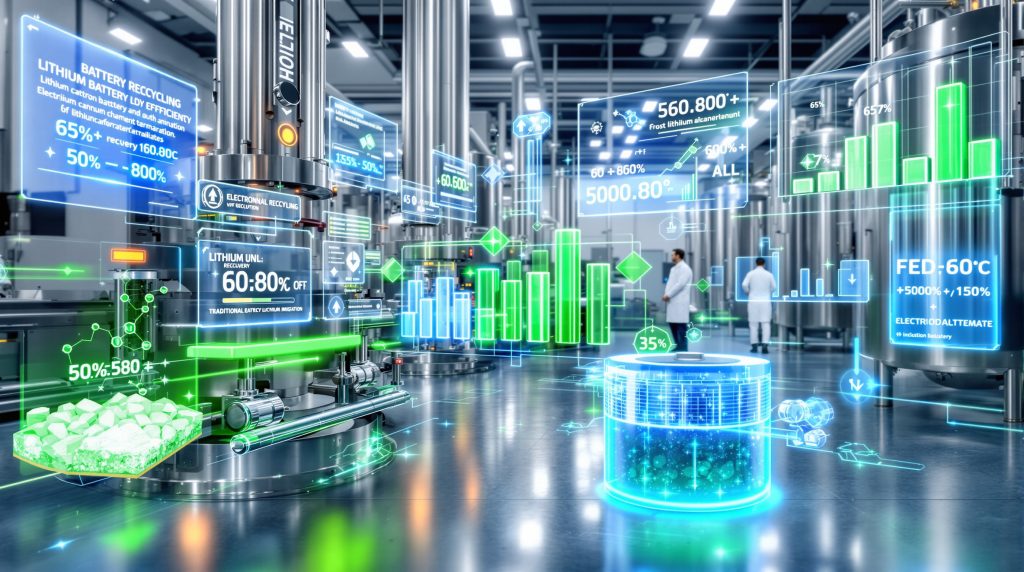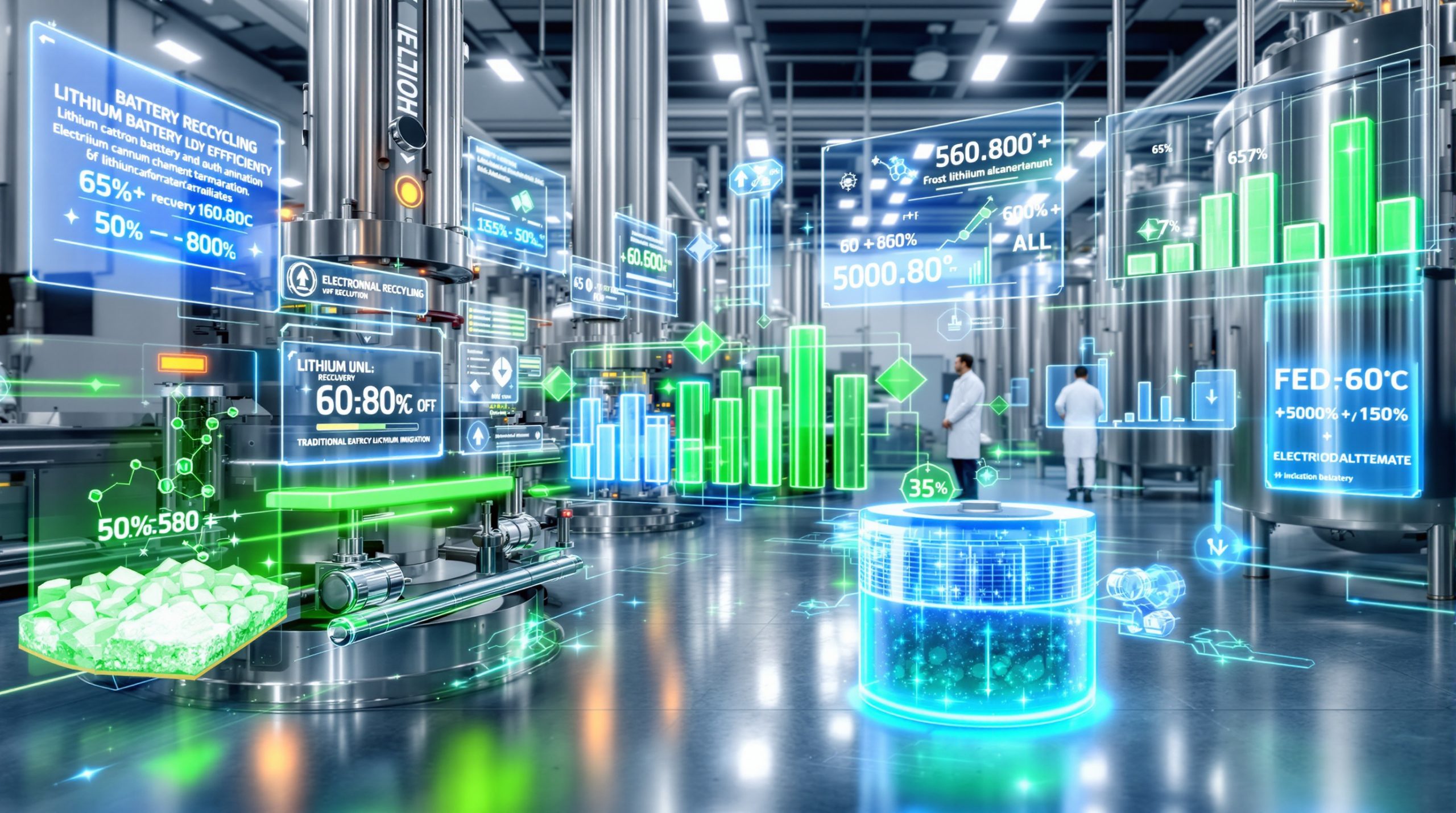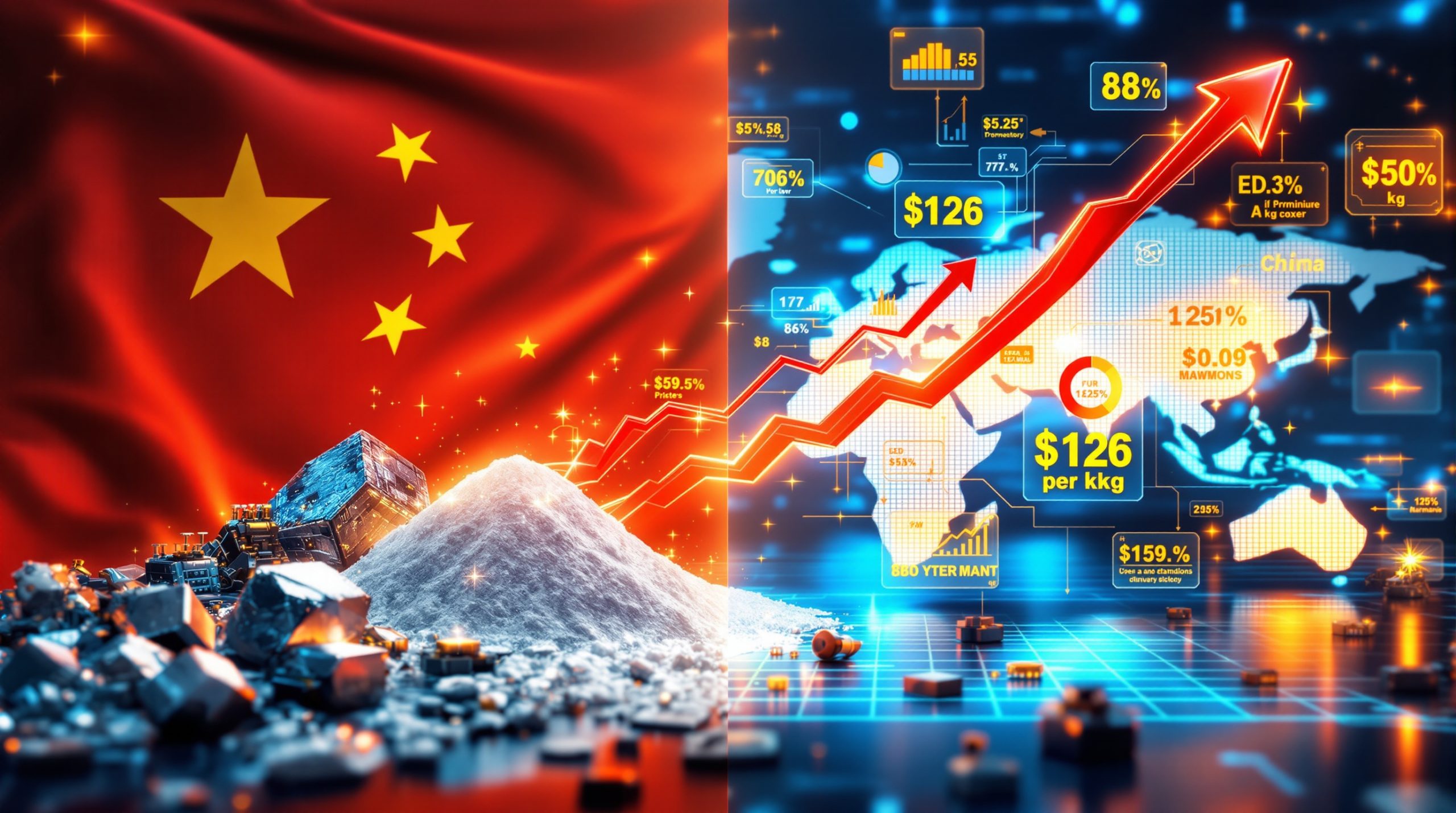What Environmental Challenges Drive the Need for Greener EV Battery Recycling?
The circular economy revolution begins with understanding why traditional recycling approaches fail to achieve sustainability goals. Current battery processing methods create more environmental problems than they solve, requiring energy-intensive operations that contradict the clean energy objectives of electric vehicle adoption. Furthermore, finding a greener way to recycle EV batteries has become essential for reducing the environmental footprint of electric transportation.
Modern recycling facilities depend on extreme thermal conditions and chemical-heavy extraction processes that consume vast amounts of energy whilst generating toxic byproducts. These operational challenges highlight the urgent need for innovative approaches that can recover critical materials without perpetuating environmental degradation.
Energy-Intensive Pyrometallurgical Constraints
Traditional smelting operations require furnace temperatures exceeding 1,500°C to separate battery materials, consuming enormous amounts of energy and generating substantial carbon emissions. This thermal approach contradicts the environmental benefits that electric vehicles aim to provide, creating a paradox within the clean energy transition.
The process demands continuous high-temperature maintenance, specialised refractory materials, and extensive safety systems to manage extreme operating conditions. These requirements translate into significant operational costs and environmental impacts that undermine recycling economics.
Chemical-Heavy Hydrometallurgical Limitations
Conventional hydrometallurgical approaches dissolve battery materials in highly acidic solutions, requiring substantial volumes of sulphuric acid and generating massive quantities of contaminated wastewater. The chemical inventory needed for traditional processing creates secondary pollution streams that require expensive treatment systems.
These methods produce corrosive byproducts and heavy metal contamination that persist in environmental systems long after processing completion. The downstream treatment costs and regulatory compliance requirements add substantial complexity to facility operations whilst creating long-term liability exposure.
How Does Electrochemical Processing Transform Battery Material Recovery?
Electrochemical extraction represents a fundamental paradigm shift from energy-intensive thermal and chemical dissolution methods. This innovative approach leverages the same principles used in battery charging systems, essentially reversing the electrochemical processes to recover lithium ions in aqueous solutions.
Research teams have developed compact electrochemical reactors that operate at ambient temperatures whilst achieving superior recovery rates and material purity. The technology eliminates the need for extreme processing conditions whilst producing battery-grade materials ready for manufacturing integration.
Ion Migration Technology Fundamentals
The electrochemical approach recharges waste cathode materials within controlled reactor environments, causing lithium ions to migrate into aqueous solutions where they combine with hydroxide ions. This process produces high-purity lithium hydroxide directly, eliminating multiple downstream processing steps required by traditional methods.
According to research published in Joule journal, this methodology addresses the fundamental question of why charging reactions cannot be inverted for recycling purposes. Sibani Lisa Biswal, chair of Rice University's Department of Chemical and Biomolecular Engineering, explains that pairing charging chemistry with compact electrochemical reactors enables clean lithium separation whilst producing exact salts manufacturers require.
The process operates through controlled electrochemical potential manipulation, allowing selective extraction of specific ions whilst preserving cathode material structures. This precision approach minimises material degradation and maximises recovery efficiency compared to conventional dissolution methods.
Recovery Efficiency Achievements
Electrochemical processing achieves remarkable improvements in material recovery rates whilst operating at significantly lower energy intensities than traditional approaches. The ambient temperature operation eliminates the massive energy requirements associated with high-temperature smelting operations.
Haotian Wang, associate professor of chemical and biomolecular engineering at Rice University, emphasises that directly producing high-purity lithium hydroxide shortens the processing pathway back into new batteries. This streamlined approach reduces processing steps, minimises waste generation, and creates more resilient supply chain networks.
The technology produces materials meeting battery-grade purity specifications without requiring multiple refining stages. This direct production capability eliminates intermediate processing costs whilst ensuring consistent quality control throughout the recovery operation.
What Role Does Supply Chain Resilience Play in Recycling Innovation?
Geographic concentration of critical mineral processing creates systemic vulnerabilities that advanced recycling technologies can address. Current supply chains depend heavily on single-nation dominance across multiple processing stages, from primary extraction through battery cell manufacturing.
China controls 85-90% of global rare earth mine-to-metal refining capacity and supplies 68% of global cobalt, 65% of nickel, and 60% of EV-battery-grade lithium through its refineries. Additionally, three out of four EV batteries manufactured globally originate from Chinese facilities, according to Goldman Sachs analysis on resource geopolitics and critical mineral supply chains.
Geopolitical Risk Mitigation
This concentrated supply structure creates vulnerability to trade policy changes, geopolitical tensions, and export restrictions that could disrupt global electric vehicle production. Advanced domestic recycling capabilities provide strategic alternatives to foreign-controlled primary supply chains.
Developing robust recycling infrastructure enables nations to reduce dependency on concentrated foreign suppliers whilst building domestic expertise in critical material processing. This diversification strategy enhances supply security whilst creating economic opportunities in emerging clean technology sectors.
Water Consumption and Environmental Impact
Primary lithium extraction requires approximately 500,000 litres of water per tonne of lithium produced, creating significant environmental pressures in water-scarce regions. The extraction and refining processes can contaminate remaining water resources through chemical runoff and byproduct disposal.
Advanced recycling technologies that operate in aqueous environments can dramatically reduce water consumption compared to primary extraction whilst eliminating the geographic constraints associated with brine pool locations. This water efficiency advantage becomes increasingly important as global water scarcity intensifies.
How Do Closed-Loop Systems Minimise Environmental Impact?
Modern recycling facilities implement integrated processing approaches that recover and regenerate process chemicals whilst achieving zero liquid discharge protocols. These systems capture and reprocess acid solutions, precipitation chemicals, and process water to eliminate waste streams.
Advanced hydrometallurgical facilities employ cascade separation systems that sequentially extract different metals through controlled pH adjustments and chemical additions. However, implementing a comprehensive battery recycling process that minimises environmental impact requires sophisticated waste management solutions.
Sequential Metal Recovery Optimisation
Precipitation cascade designs enable selective extraction of cobalt, nickel, and lithium through systematic chemical environment manipulation. Each extraction stage targets specific metals whilst preserving others for subsequent recovery operations.
These integrated systems achieve high recovery rates across multiple battery metals simultaneously. The coordinated extraction approach reduces processing costs whilst ensuring comprehensive material utilisation from input feedstock streams.
Process Chemical Regeneration
Acid recovery systems enable facilities to reuse sulphuric acid and other process chemicals multiple times before replacement becomes necessary. These regeneration capabilities reduce operating costs whilst minimising chemical waste disposal requirements.
Automated monitoring systems track chemical composition and effectiveness throughout multiple use cycles, optimising regeneration timing and maintaining consistent processing performance. This systematic approach reduces chemical procurement costs whilst enhancing environmental performance.
What Economic Drivers Support Advanced Recycling Technology Adoption?
The global e-waste crisis represents a massive economic opportunity disguised as an environmental challenge. In 2022, the world generated 62 million metric tonnes of electronic waste containing 1.1 billion kilograms of copper, 1.9 billion kilograms of nickel, and 1.1 billion kilograms of aluminium, according to the United Nations Global E-Waste Monitor.
Only 20% of these billions of kilograms of essential metals were recovered, primarily because recycling costs exceed primary extraction expenses. This economic imbalance creates artificial incentives for wasteful linear consumption patterns rather than circular material flows.
Cost Structure Evolution
Advanced processing technologies that reduce energy consumption, eliminate chemical waste, and operate at higher efficiency levels can achieve cost parity with primary extraction. This economic breakthrough enables market-driven adoption without requiring regulatory mandates or subsidies.
Processing cost reductions stem from multiple efficiency gains including lower energy consumption, reduced chemical usage, elimination of high-temperature operations, and direct production of battery-grade materials. These combined improvements create substantial competitive advantages over traditional recycling methods.
Market Incentive Alignment
As primary extraction costs increase due to resource depletion, environmental compliance, and transportation requirements, recycling technologies become increasingly competitive. This natural cost convergence supports sustainable transition to circular economy models.
Advanced recycling facilities can be located near end-of-life battery sources, reducing transportation costs whilst enabling rapid processing of available materials. This geographic flexibility provides economic advantages unavailable to primary extraction operations tied to specific geological formations.
How Does Direct Recycling Preserve Material Integrity?
Direct recycling approaches prioritise material structure preservation through mechanical and controlled thermal processing rather than complete chemical dissolution. These methods maintain cathode crystal structures and electrochemical properties, extending material lifecycles beyond traditional recycling limitations.
Physical separation technologies enable component-level disassembly that preserves valuable materials in near-original condition. This structure-preserving approach maintains electrochemical performance characteristics whilst reducing processing energy requirements.
Crystal Structure Maintenance
Advanced separation protocols use controlled thermal treatment to remove adhesives and bindings without degrading cathode crystal structures. Temperature and atmospheric control systems prevent unwanted chemical reactions that could compromise material performance.
Mechanical disassembly systems separate different battery components whilst maintaining material integrity throughout the process. This precision approach enables reuse of materials with minimal performance degradation compared to completely reconstituted alternatives.
Performance Preservation Metrics
Directly recycled cathode materials retain electrochemical performance characteristics nearly equivalent to virgin materials. This performance preservation eliminates the need for complete material reconstitution whilst maintaining battery performance standards.
Quality control protocols verify crystal structure integrity through X-ray diffraction analysis and electrochemical testing. These verification systems ensure recycled materials meet manufacturing specifications for direct integration into new battery production.
What Infrastructure Requirements Enable Commercial-Scale Implementation?
Industrial-scale deployment requires integrated facility designs that combine multiple processing technologies within coordinated operational frameworks. Modular reactor systems enable scalable processing capacity that can adapt to varying feedstock availability and market demand.
Safety infrastructure becomes critical when handling lithium-ion batteries due to thermal runaway risks and electrolyte hazards. Specialised containment systems, fire suppression protocols, and hazardous material handling procedures ensure safe operations throughout the processing cycle.
Regulatory Compliance Frameworks
The European Union Battery Regulation mandates recycled content targets that create market drivers for advanced recycling capacity. These regulatory requirements establish minimum recycled material percentages that battery manufacturers must achieve.
Compliance systems require detailed material tracking, quality certification, and third-party verification protocols that document recycled content throughout supply chain networks. These traceability requirements create administrative complexity but ensure authentic circular material flows.
Automation Integration Systems
Consistent processing quality requires automated control systems that monitor chemical compositions, temperature profiles, and extraction efficiency throughout production cycles. These monitoring systems enable real-time adjustments that optimise recovery rates and material quality.
Workforce training programmes develop specialised technical skills needed for advanced recycling operations. These educational initiatives create employment opportunities whilst building domestic expertise in critical technology sectors.
How Do Second-Life Applications Extend Battery Value Chains?
Cascaded battery applications capture additional economic value from batteries before final recycling becomes necessary. Electric vehicle batteries typically retain 70-80% capacity when automotive performance requirements are no longer met, but remain suitable for stationary energy storage applications.
Second-life deployment extends total battery lifecycle duration by 5-10 additional years in stationary applications where different performance envelopes apply. Grid-scale energy storage tolerates lower power densities and different discharge characteristics than automotive applications require.
Performance Threshold Management
Automotive applications require high power density and rapid response characteristics that become compromised as battery capacity degrades. Stationary applications prioritise energy capacity and calendar life over instantaneous power delivery, creating opportunities for continued battery utilisation.
Performance monitoring systems track capacity degradation throughout second-life deployment, ensuring batteries meet application requirements whilst optimising utilisation periods. These monitoring capabilities enable predictive maintenance and end-of-life planning.
Grid Integration Benefits
Retired EV batteries provide cost-effective grid storage solutions that support renewable energy integration and grid stability functions. These applications generate revenue streams that improve overall battery lifecycle economics whilst supporting clean energy infrastructure development.
Utility-scale deployments benefit from gradual capacity degradation curves that remain acceptable for grid operations over extended periods. This performance tolerance enables maximum value extraction before final material recovery becomes necessary.
What Future Innovations Will Enhance Recycling Sustainability?
Emerging biotechnology applications explore microbial-assisted mineral recovery processes that use naturally occurring bacteria to selectively extract metals from battery materials. These biological approaches operate at ambient conditions whilst achieving high selectivity for specific target metals.
Artificial intelligence integration optimises processing parameters through real-time analysis of material composition, extraction efficiency, and quality metrics. For instance, the recent battery recycling breakthrough demonstrates how machine learning systems identify optimal operating conditions that maximise recovery rates whilst minimising energy consumption and chemical usage.
Next-Generation Battery Chemistry Adaptation
Advanced recycling technologies must adapt to evolving battery chemistries including solid-state designs and alternative cathode materials. Processing flexibility becomes essential as battery technology continues developing beyond current lithium-ion configurations.
Research initiatives explore molecular-level recycling approaches that can accommodate diverse battery chemistries whilst maintaining high recovery efficiency. These adaptable systems ensure recycling infrastructure remains relevant as battery technology evolves, supporting the broader sustainable mining transformation needed for the clean energy transition.
Industry Scaling Projections
Global recycling capacity must expand dramatically to accommodate growing EV battery volumes reaching end-of-life status. Processing infrastructure development requires substantial capital investment and coordinated planning across multiple geographic regions.
Investment requirements for adequate recycling capacity development range from $12-15 billion by 2025 to $120-180 billion by 2035, according to industry forecasts. These investment levels reflect the massive scale of infrastructure needed to support circular battery economies.
Processing capacity projections indicate growth from 180-220 thousand tonnes per year currently to 2.5-3.5 million tonnes per year by 2035, representing more than tenfold expansion in global recycling capabilities. Consequently, countries must establish comprehensive waste management solutions to handle this massive growth in recyclable battery volumes.
What Does the Future Hold for Battery Recycling Leadership?
Advanced recycling technologies offer pathways to achieve 95%+ recovery rates whilst reducing processing costs by 30-40% compared to traditional methods. These efficiency improvements create economic incentives for circular material flows whilst supporting environmental sustainability objectives.
Nations developing comprehensive recycling infrastructure position themselves for green metals leadership in the emerging circular economy. This strategic positioning involves coordinated policy frameworks, investment incentives, and technology development programmes that support commercial-scale deployment.
The transition toward a greener way to recycle EV batteries represents a critical component of sustainable transportation infrastructure. Through electrochemical processing, water-based extraction, and direct recycling approaches, the industry can achieve superior material recovery whilst minimising environmental impact and supporting supply chain resilience in the growing electric vehicle market.
Furthermore, the integration of these technologies with smart grid systems and renewable energy infrastructure creates synergistic benefits that extend beyond simple material recovery. The development of a greener way to recycle EV batteries ultimately supports the broader clean energy transition by ensuring critical materials remain available for future generations of sustainable technology.
Looking to Invest in the Next Battery Technology Breakthrough?
Discovery Alert's proprietary Discovery IQ model delivers instant notifications about significant ASX mineral discoveries, including critical battery materials like lithium, cobalt, and nickel that power the green technology revolution. Stay ahead of the market by exploring Discovery Alert's historic discovery examples and begin your 30-day free trial today to position yourself at the forefront of the clean energy investment opportunity.




